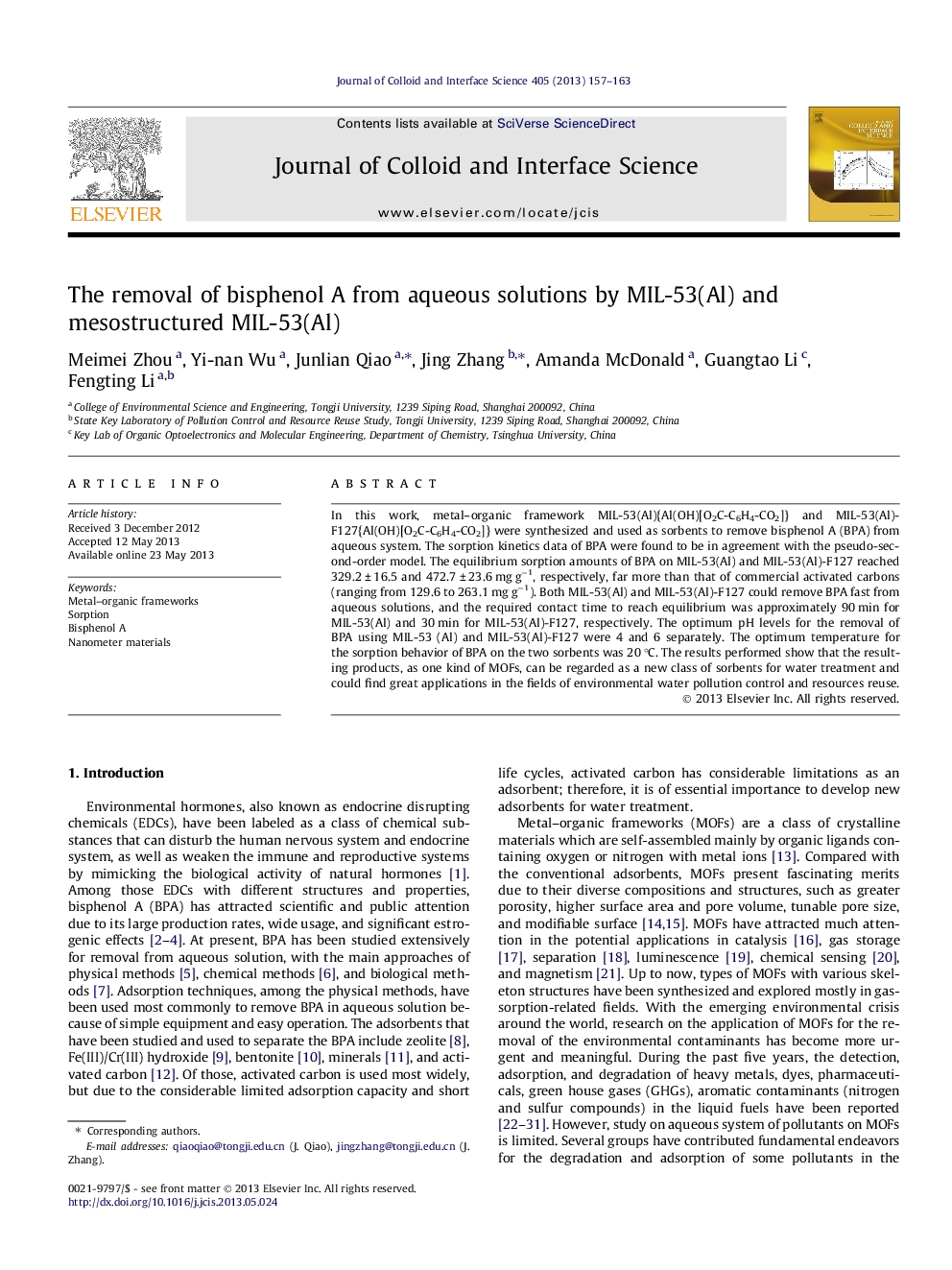| کد مقاله | کد نشریه | سال انتشار | مقاله انگلیسی | نسخه تمام متن |
|---|---|---|---|---|
| 607647 | 1454590 | 2013 | 7 صفحه PDF | دانلود رایگان |

• MIL-53(Al) and mesostructured MIL-53(Al) were used as adsorbents to remove BPA.
• Adsorption capacities of both adsorbents are considerably satisfying.
• pH and temperature have influence on the adsorption process.
• Breathing of the MIL-53 structure was inferred to the absorption mechanism.
• π–π Bonds and hydrogen bonding were proposed for the adsorption mechanism.
In this work, metal–organic framework MIL-53(Al){Al(OH)[O2C-C6H4-CO2]} and MIL-53(Al)-F127{Al(OH)[O2C-C6H4-CO2]} were synthesized and used as sorbents to remove bisphenol A (BPA) from aqueous system. The sorption kinetics data of BPA were found to be in agreement with the pseudo-second-order model. The equilibrium sorption amounts of BPA on MIL-53(Al) and MIL-53(Al)-F127 reached 329.2 ± 16.5 and 472.7 ± 23.6 mg g−1, respectively, far more than that of commercial activated carbons (ranging from 129.6 to 263.1 mg g−1). Both MIL-53(Al) and MIL-53(Al)-F127 could remove BPA fast from aqueous solutions, and the required contact time to reach equilibrium was approximately 90 min for MIL-53(Al) and 30 min for MIL-53(Al)-F127, respectively. The optimum pH levels for the removal of BPA using MIL-53 (Al) and MIL-53(Al)-F127 were 4 and 6 separately. The optimum temperature for the sorption behavior of BPA on the two sorbents was 20 °C. The results performed show that the resulting products, as one kind of MOFs, can be regarded as a new class of sorbents for water treatment and could find great applications in the fields of environmental water pollution control and resources reuse.
Figure optionsDownload high-quality image (65 K)Download as PowerPoint slide
Journal: Journal of Colloid and Interface Science - Volume 405, 1 September 2013, Pages 157–163